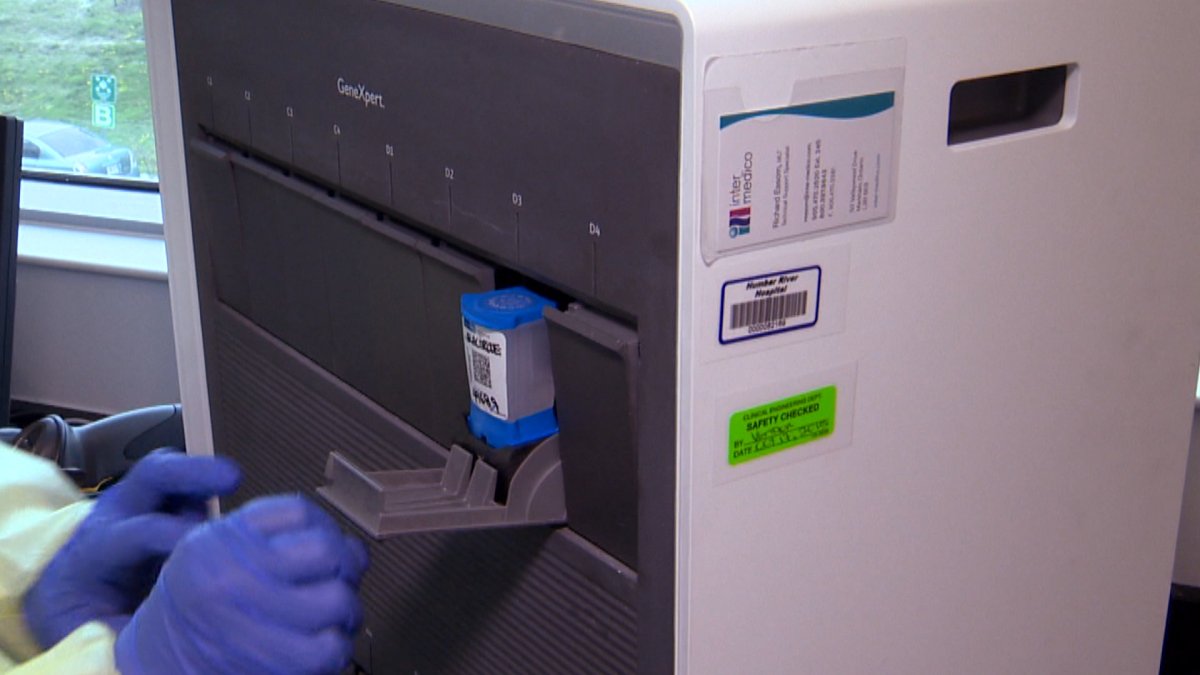Lejomee knows better than most how the COVID-19 testing process operates. Over the past six weeks, she’s been tested a staggering five times for the new coronavirus and each result has come back the same: positive.

“It’s just the same thing over and over again. Everyone at the hospital knows who I am now,” she said.
“I was scared, to be honest with you, because I have my mother-in-law and I have my children at home. And I was confused because I thought I did the best I could to be safe.”
The 35-year-old mother of four works at a Toronto care home for people with disabilities and requires a negative test result before she can return to work. She suspects she became infected at her workplace and recalled the moment last month when she suddenly lost her sense of smell.
“My mother-in-law was frying fish one day and you know how fish smells; I couldn’t smell it,” she said.
“And then, when I was trying to eat, I couldn’t taste it. I didn’t have a cold at that point and it lasted a long time. That’s when I knew that something was clearly wrong.”
On April 11, Lejomee (who did not want to disclose her last name because of her work) visited her local hospital, where staff identified her lost sense of smell as a possible symptom of COVID-19. They performed a test — a nasal swab that Lejomee described as “uncomfortable but tolerable.”

The test itself lasted less than 30 seconds and it would’ve only taken a couple of hours to process the sample and determine whether she was still infected. But the facility didn’t have the capacity to process the test onsite.
Instead, her sample — like the vast majority — had to be placed in a cooler bag, picked up by a courier and driven to another lab elsewhere in the city, where they join the queue.
“Not all labs have the capacity to process large volumes of samples, so that might influence the delay on results,” said Ruben Rodriguez, manager of a COVID-19 Assessment Centre in Toronto, noting that their average waiting time for a COVID-19 test result is around four days.
“I have seen a huge improvement,” he said. “It used to take something like 12 days before we would have our results.”
Global News tracked a COVID-19 test in Toronto from start to finish — from the initial swab to delivery of the final result — and witnessed a system still struggling with logistical challenges and equipment shortages. Ontario is facing calls to urgently expand its testing capacity as businesses re-open and restrictions are lifted.
“Testing is key to understanding when new cases arise so that we can descend upon them with overwhelming force and suppress those handful of cases from becoming an outbreak,” said Dr. Raywat Deonandan, an epidemiologist and Assistant Director of the Interdisciplinary School of Health Sciences at the University of Ottawa.

“For a while in Ontario, only the public health labs were engaged in testing capacity,” he said. “But we needed to loosen up those criteria to commercial labs and university labs. It’s an ‘all hands on deck’ scenario.”
Ontario’s COVID-19 testing system currently consists of 26 labs: six operated by public health, four private community labs and 16 hospital labs.
One of the latter, Toronto’s Humber River Hospital Medical Laboratory, is a new state-of-the-art facility, which operates 24/7 and conducts more than 2,000 tests per day looking for a range of illnesses and ailments, from cancer to high cholesterol.
But the lab’s COVID-19 testing system is a much smaller operation, currently capable of processing just 30 tests per day.
“I do wish that we had more tests and capability so that we could be more informed with our decision making,” said Dr. William Dubinski, the hospital’s Chief of Pathology and Medical Lab Director.
The lab’s COVID-19 test samples are taken to a separate area, through three sets of doors and negative pressure rooms. Staff put on additional personal protective equipment and carefully transfer the swab sample from the test tube into a small cartridge, which is then placed into a specialised machine — a rectangular box that vaguely resembles a photocopier with slots on its front face to insert the cartridges containing COVID-19 test samples.

The machine, by American manufacturer Cepheid, analyses a sample’s DNA for two genes connected to COVID-19, using a technique known as polymerase chain reaction (PCR) that amplifies the virus’ genetic material so that it can be detected.
It takes less than an hour to produce a positive or negative result. But the lab is limited to just one machine and it can only process 16 cartridges simultaneously. And the test, itself, is in short supply.
“Prior to this year, there was nobody developing that test. So every company that’s now developing that test has had to ramp up production,” said Dubinski. “There are supply chain issues and there’s huge demand for the tests. It’s as simple as that.”
Dubinski said the lab is about to add a new test to their arsenal: a made-in-Italy serological test, just approved by Health Canada, which checks a patient’s blood for antibodies to determine whether they’ve been infected with COVID-19. The lab hopes to begin serological testing by the end of the month.
“That tells you how many people have been exposed, and have hopefully partial or complete immunity. And it helps you more with public policy decision-making,” Dubinski said.
Serological and surveillance testing is especially critical because many cases are mild or even symptom-free. Several provinces have expanded COVID-19 testing for those without symptoms, including asymptomatic health-care workers in Ontario.

“We need to try and get a measure of that portion of the iceberg that’s under the water, those asymptomatic cases. We need to do that before we open,” said Colin Furness, an infection control epidemiologist at the University of Toronto.
“We look where the risk is going to be highest and we check there. I would be testing grocery store clerks weekly and I would be testing all of them.”
Lejomee’s test was prioritised because she works in a care home, and she received her result in about three days. Despite testing positive for the fifth time, her only symptoms — the lost sense of smell and taste — subsided after two weeks.
Doctors told her she’s likely carrying genetic material from a “dead virus” and is no longer contagious. It’s unclear how much longer it will take before her immune system removes all traces of the virus.
“I’m just waiting for that negative so I can get back to work,” she said. “I love what I do. I have so much passion and that’s why I want to get back. So fingers crossed.”







Comments